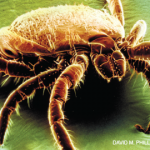3. Don’t routinely perform surveillance joint radiographs to monitor juvenile idiopathic arthritis (JIA) disease activity.
There are no available data to suggest that routinely obtaining surveillance joint radiographs to monitor for the development or progression of erosive changes in children with JIA improves outcomes. Radiation exposure and cost are potential risks. In the absence of data to support clear benefit, radiographs should be obtained by the pediatric rheumatologist only when history and physical exam raise clinical concern about joint damage or decline in function.
4. Don’t perform methotrexate toxicity labs more often than every 12 weeks on stable doses.
Laboratory abnormalities in JIA patients taking methotrexate are usually mild and rarely prompt significant changes in management. Screening low-risk children every one to two months may lead to unnecessary interruptions in treatment. More frequent monitoring may be required in the first six months after methotrexate initiation or dose escalation and in patients with risk factors for toxicity, including obesity, diabetes, renal disease, psoriasis, systemic JIA, Down syndrome, and use of alcohol or other hepatotoxic or myelosuppressive medications.
5. Don’t repeat a confirmed positive ANA in patients with established JIA or SLE.
ANA is important in the diagnosis of SLE and positivity guides more frequent slit lamp examination for detection of uveitis in children with JIA. Beyond this, there is no evidence that ANA is valuable in the ongoing management of SLE or JIA. It is recommended that, following diagnosis of SLE or JIA, ANA should not be repeated unless a child with JIA has evolution of symptoms suggestive of an autoimmune connective tissue disease.



